Can I get away with riding an all-purpose gravel tyre?
Do gravel riders need to fit different tyres for different conditions and times of year?
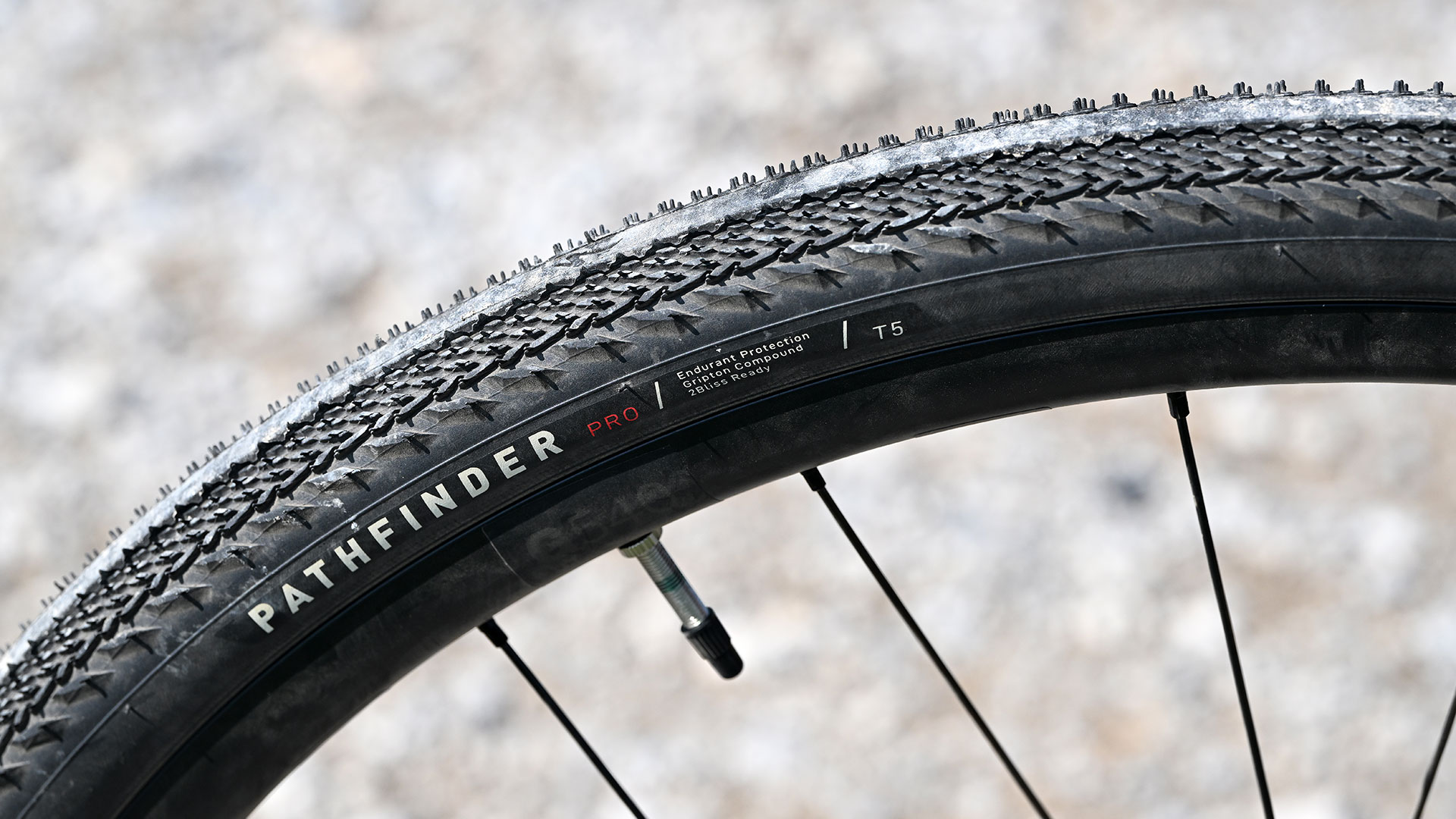
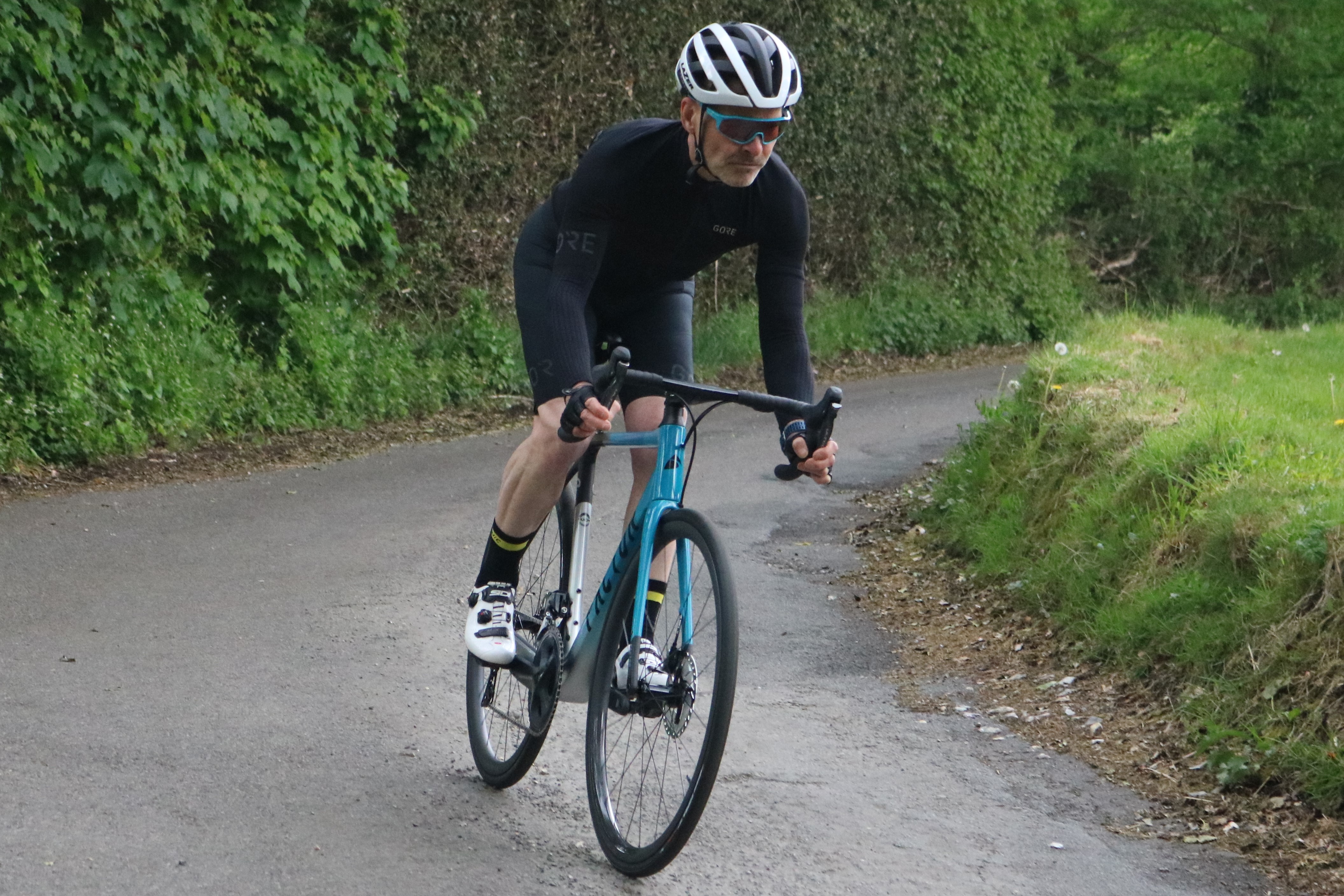
Wout van Aert won his second cyclocross world championship on treads taken from a set of green Michelin Mud tyres. What was unusual was that, at the time, these tyres hadn’t been made for 15 years. His manager had a collection left maturing in his basement since 2002, bringing them out for van Aert to use on the thawing snowy, rocky conditions of the 2017 parcours.
Cyclocross racers obsess about tyre choice; peer inside their trailers and there are rows of wheels shod with different tyres to match the course conditions.
The 33mm maximum width for cyclocross tyres in UCI-sanctioned races makes the balance between grip and rolling resistance critical. But with only the frame’s tyre clearance, typically at least 40mm, limiting how much rubber gravel riders can put on the trail, is tyre choice as significant for gravel?
Does the do-it-all gravel tyre exist?
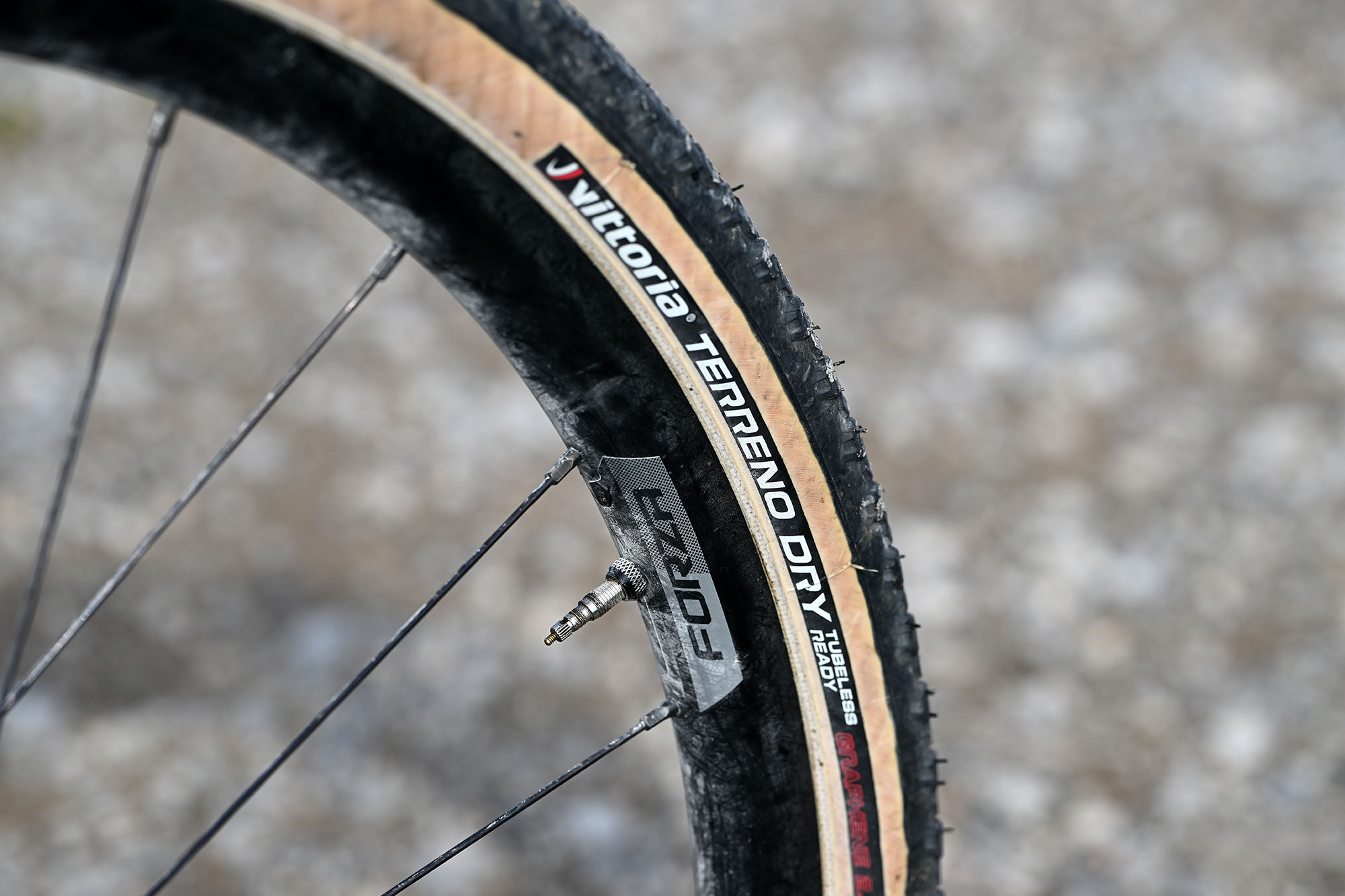
Gravel tyres are the best they've ever been, claims Bertrand Mejia-Morin at Bike Tires Direct
“If you're not aiming for the podium where every advantage is needed, especially in an increasingly competitive field, then yes, you can get away with an all-purpose tyre the majority of the time,” says gravel pro Emily Newsom.
It’s a view echoed by her sponsors, Bertrand Mejia-Morin and the team at Bike Tires Direct in Portland, Oregon.
“Gravel tyres are the best they've ever been, and so-called all-rounder tyres are a lot better at more things than they used to be. Part of this comes down to casing and compound technology, but the big part of it is volume. At one time, 35mm used to be wide, now we are seeing 50mm and up as standards for a hard route.
“For the average rider, added tyre volume does more to improve handling and control than different tread patterns. If your new bike comes with 45mm+ tyres, you could probably use them for nearly everything,” says Mejia-Morin.
Get The Leadout Newsletter
The latest race content, interviews, features, reviews and expert buying guides, direct to your inbox!
He cites another advantage of riding a generalist tyre.
“Underbiking can be key to developing foundational handling skills. Ask anyone who has raced cyclocross or ridden a rigid mountain bike.
“If you are forced to tackle challenging terrain with a bike that's not a perfect match for the job, then you have to compensate with technique. This includes choosing smart lines, body positioning, and learning the true limits of your equipment,” he says.
Mejia-Morin points to another consideration in choosing whether to swap out your bike’s tyres: whether they can be run tubeless.
“If the stock tyres on your gravel bike are not tubeless compatible, you should switch them. The prevalence of tubeless setups has really revolutionized the reliability and performance you can experience with gravel tyres. You're missing out if you aren't running tubeless for gravel,” he says.
Tread still matters
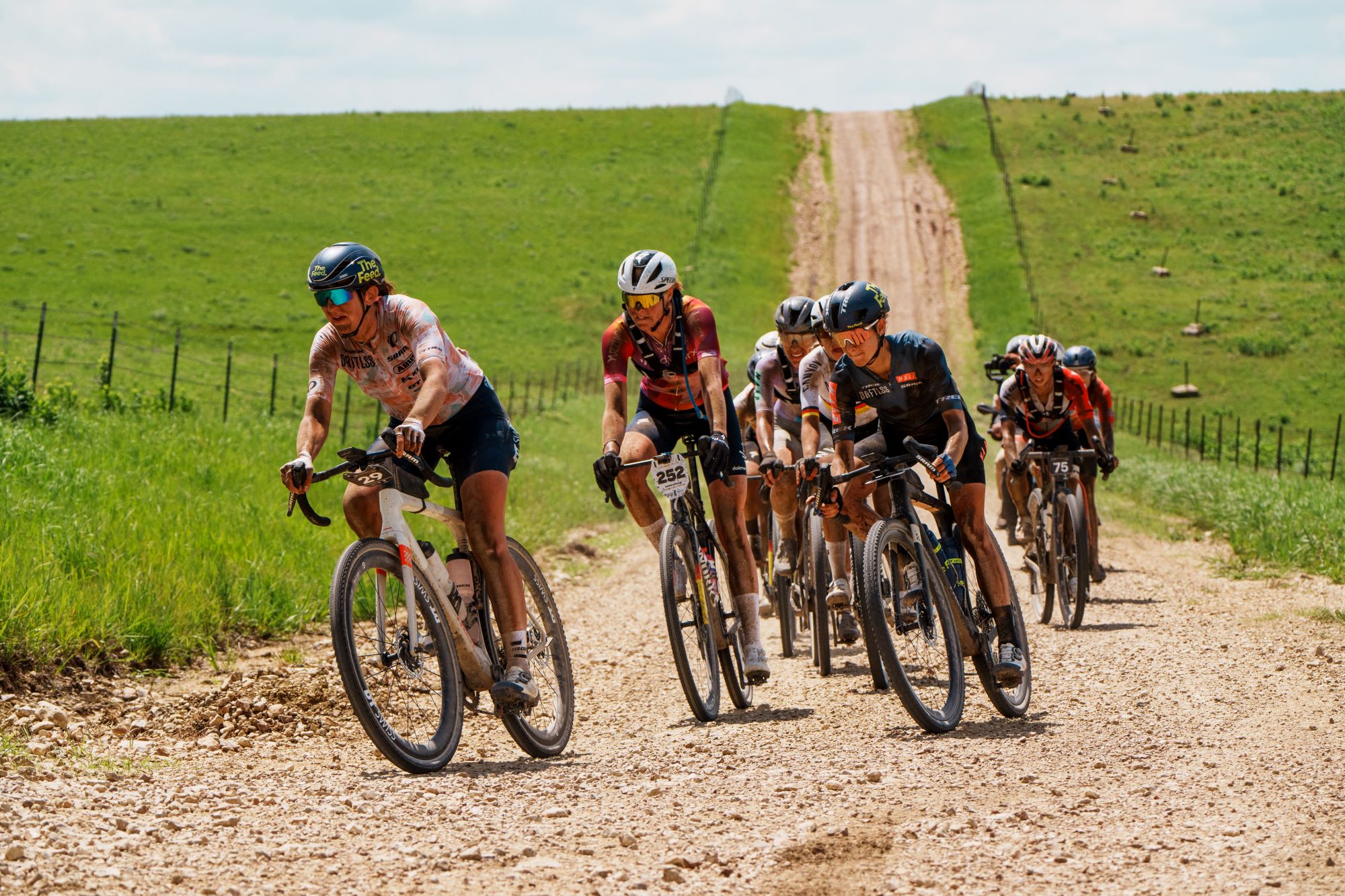
Unbound's sharp flints can wreck a more delicate tyre
While the consensus from the US is that all-rounder tyres, as fitted to most gravel bikes when new, work for many riders in most conditions, both Newsom and Mejia-Morin point out that they’re not the best choice for all rides.
“For example, the north course of Unbound is infamous for miles of sharp unforgiving rocks that can easily slice a tyre and ruin a day,” says Newsom. They’re called the Flint Hills for a reason.
“In this case choosing a very tough tyre would be the wisest path. Or if there is a course with a heavy dose of singletrack and/or technical descents, I would opt for a tyre with a more aggressive tread to ensure I have the grip I need to ride these sections safely.”
Muddy, wet trails may call for a different tyre choice too.
“Another factor to consider is mud, although this opens a can of worms because there's a variety of mud: sticky Mid South mud, sandy Texas mud, silty mud etc. In this situation I would find out what type of mud the dirt in the area will morph into and make sure my all-purpose tyre will work for that and if not, definitely switch to a tyre that will fit this scenario,” Newsom continues.
Different in the UK?
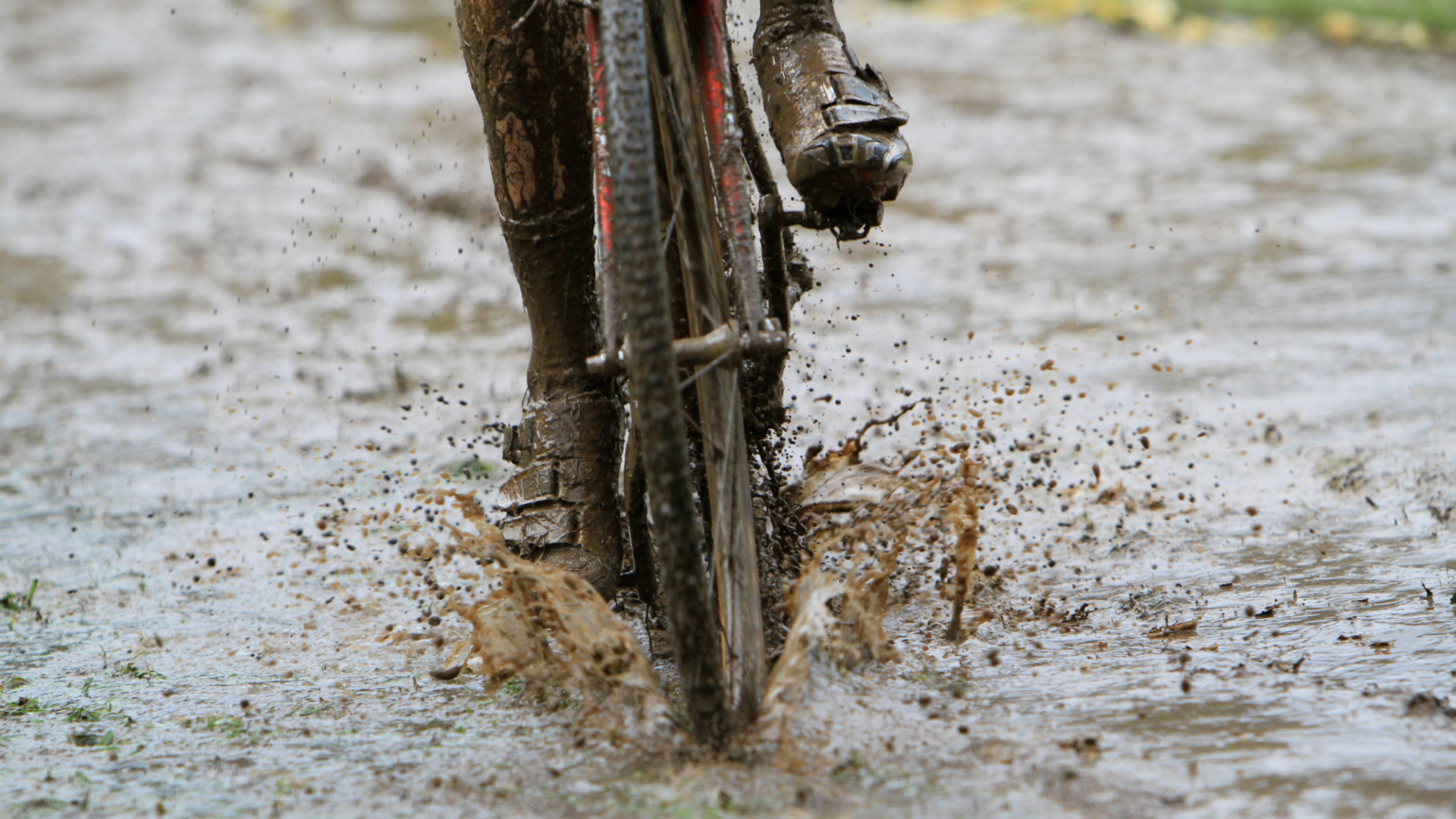
UK riders face radically different off-road conditions during the year
Those exceptions Stateside are the norm for many UK riders, for whom muddy conditions are typical for much of the year, scattered, at least in much of the South, with flints.
“The UK wet and muddy gravel experience is very different from the US dry weather scene where a lot of the tyre and bike brands’ marketing originates,” says Paul Wilson of Upgrade Bikes, who sell their own Kinesis bikes alongside Challenge gravel tyres.
“The US gravel scene was born from the thousands of gravel back roads they have all across America. For our UK scene we are sharing a lot of the same trails we use for mountain biking. ‘All-round’ gravel tyres would be fine in the US as the gravel roads don’t change from season to season, but here it is advisable to change tyres as we move from dusty trails to gloopy mud.”
Wilson suggests that for much of the year UK riders might fit a tyre that makes full use of the frame clearance, with 5mm to spare either side of the tyre, with maybe a file tread, depending on where they like to ride. In the winter, he advises a more treaded tyre that’s also narrower to avoid clogging the frame.
Cycling Weekly’s Matt Ischt-Barnard goes even further, saying that when he previously worked as a gravel bike product manager, he’d spend months pondering which tyre to use on a given bike.
“Many brands are now revising their tyres, generally in the direction of greater knobbles, greater volume and more durable casings,” he says.
“The big issue for many will be rolling resistance. The semi-slicks currently available don't offer massive watt savings but have significantly less grip. Rolling from the slick part to the knobble is never smooth enough and almost always results in a sketchy moment, especially on a hardpack.”.
His conclusion: “Suffer the watt loss, pick a tyre with more knobble and good protection. If you are at all going off-road, you will see the benefits once you hit the dirt.”
So can you just ride the tyres your bike came with?
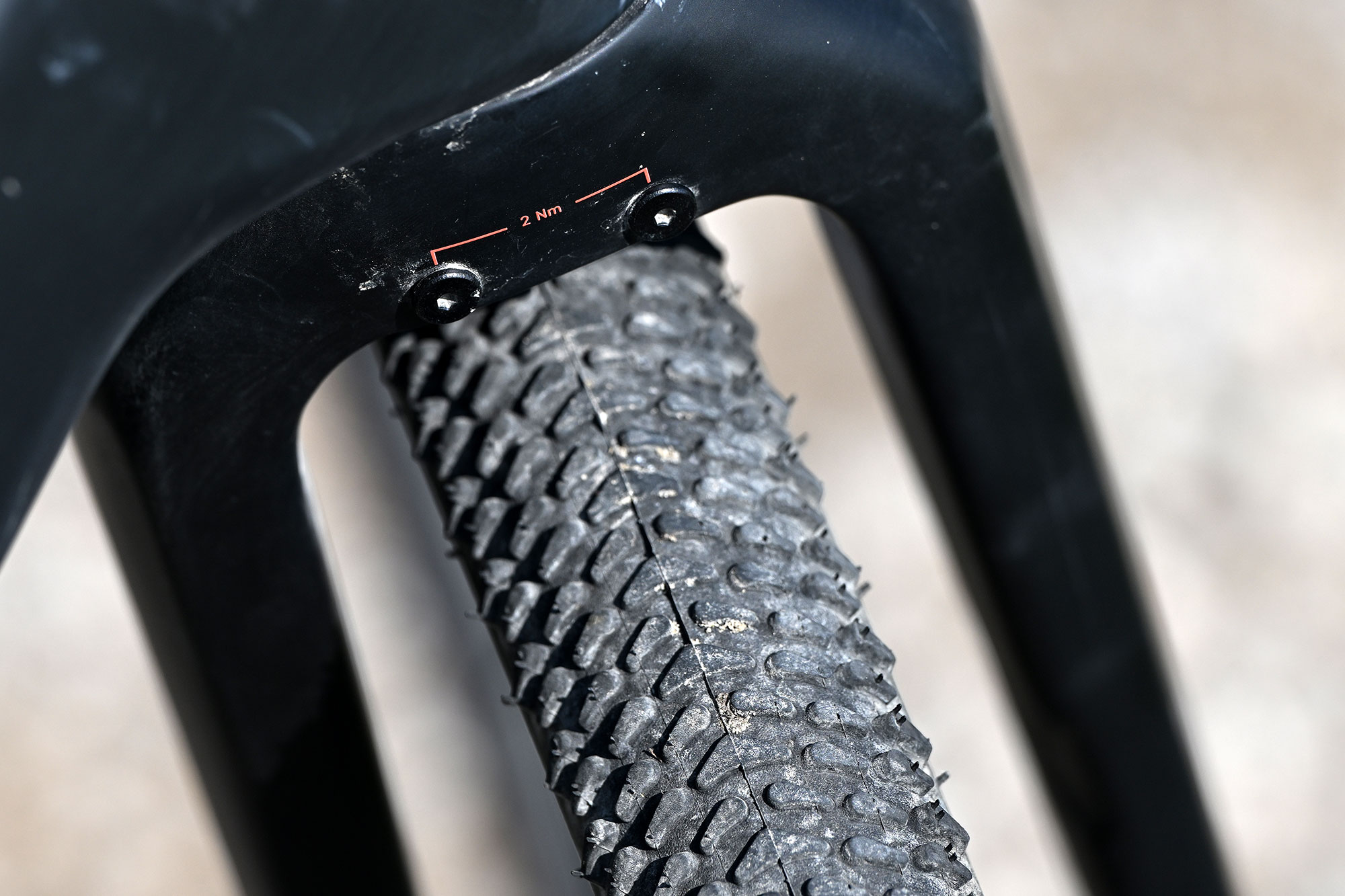
Expect to experiment to find the right tread and width for your riding
Mejia-Morin sums it up so:
“If you are a Just Riding Along sorta person, maybe dabbling in longer format events, you are more than likely a-okay to rock your stock rubber until the tread has worn off so long as you can run it tubeless. Being forced to use one tread for all terrain will make you a better rider in the long run. However, if you are a competitive racer, run the stock tires to learn where they excel and are lacking, but absolutely pick the right tool for the job when it comes to race day.
“The tires that came on your new bike are already paid for. Ride the heck out of them to see if you like them! Maybe you find that they rip on the pavement but are awful in the rough stuff, or vice versa. Gravel riding is so varied that the only real way to figure out what works for you is to ride around and find out,” he concludes.
It’s a summation we’d agree with. Just don’t expect your stock tyres to be the best choice in all conditions year-round and experiment to find a tyre that suits where and how you ride.

Thank you for reading 20 articles this month* Join now for unlimited access
Enjoy your first month for just £1 / $1 / €1
*Read 5 free articles per month without a subscription

Join now for unlimited access
Try first month for just £1 / $1 / €1
Paul started writing for Cycling Weekly in 2015, covering cycling tech, new bikes and product testing. Since then, he’s reviewed hundreds of bikes and thousands of other pieces of cycling equipment for the magazine and the Cycling Weekly website.
He’s been cycling for a lot longer than that though and his travels by bike have taken him all around Europe and to California. He’s been riding gravel since before gravel bikes existed too, riding a cyclocross bike through the Chilterns and along the South Downs.
You must confirm your public display name before commenting
Please logout and then login again, you will then be prompted to enter your display name.
-
 Man hands himself in to Belgian police after throwing full water bottle at Mathieu van der Poel during Paris-Roubaix
Man hands himself in to Belgian police after throwing full water bottle at Mathieu van der Poel during Paris-Roubaix30-year-old was on Templeuve-en-Pévèle cobbled sector when television pictures showed the bottle hitting him in the face
By Tom Thewlis Published
-
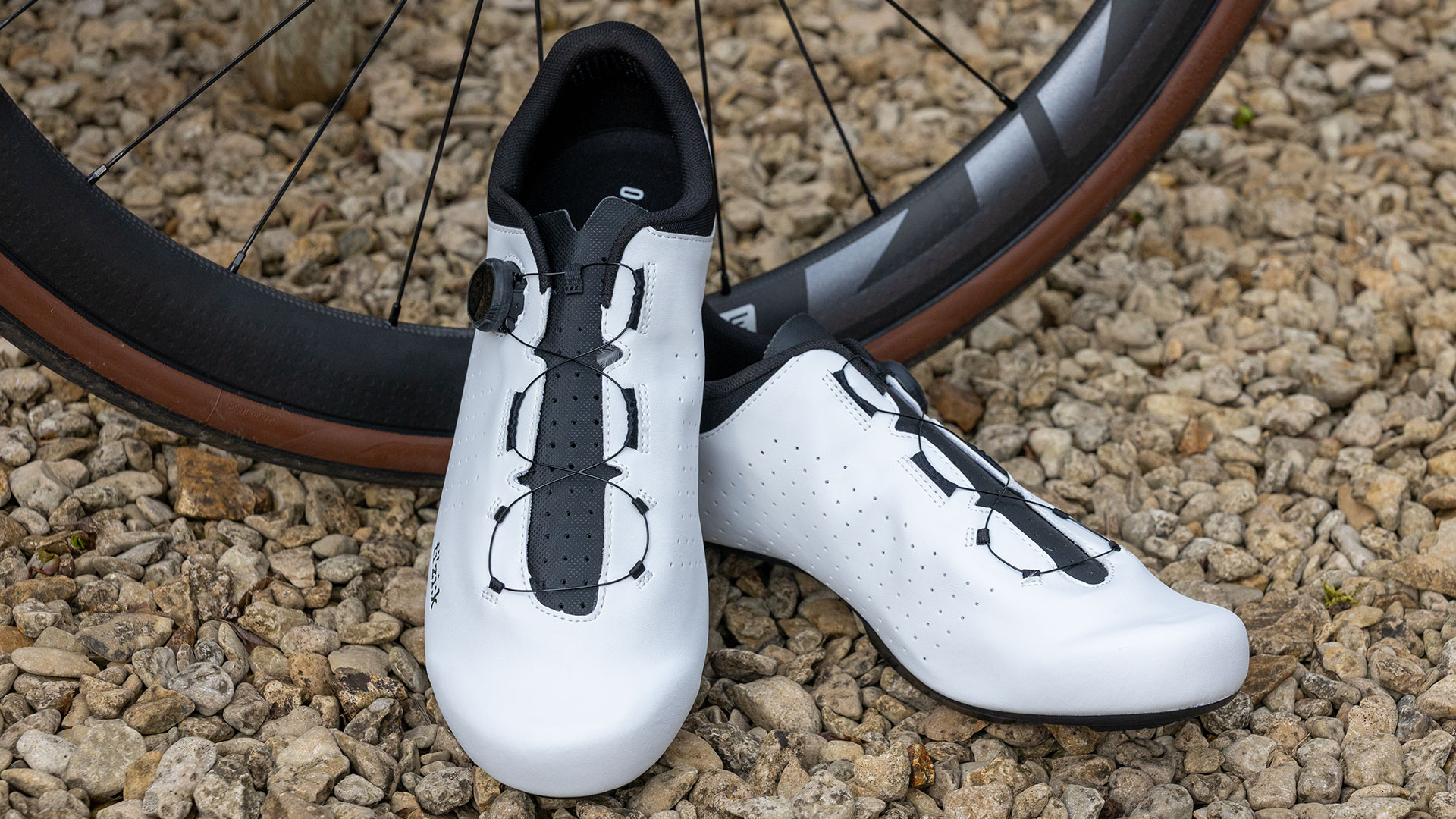 Fizik Vento Omna Wide shoe review: Yeti sneakers for those pedalling on a budget
Fizik Vento Omna Wide shoe review: Yeti sneakers for those pedalling on a budgetBroadly recommended for those of us with flipper feet
By Simon Fellows Published